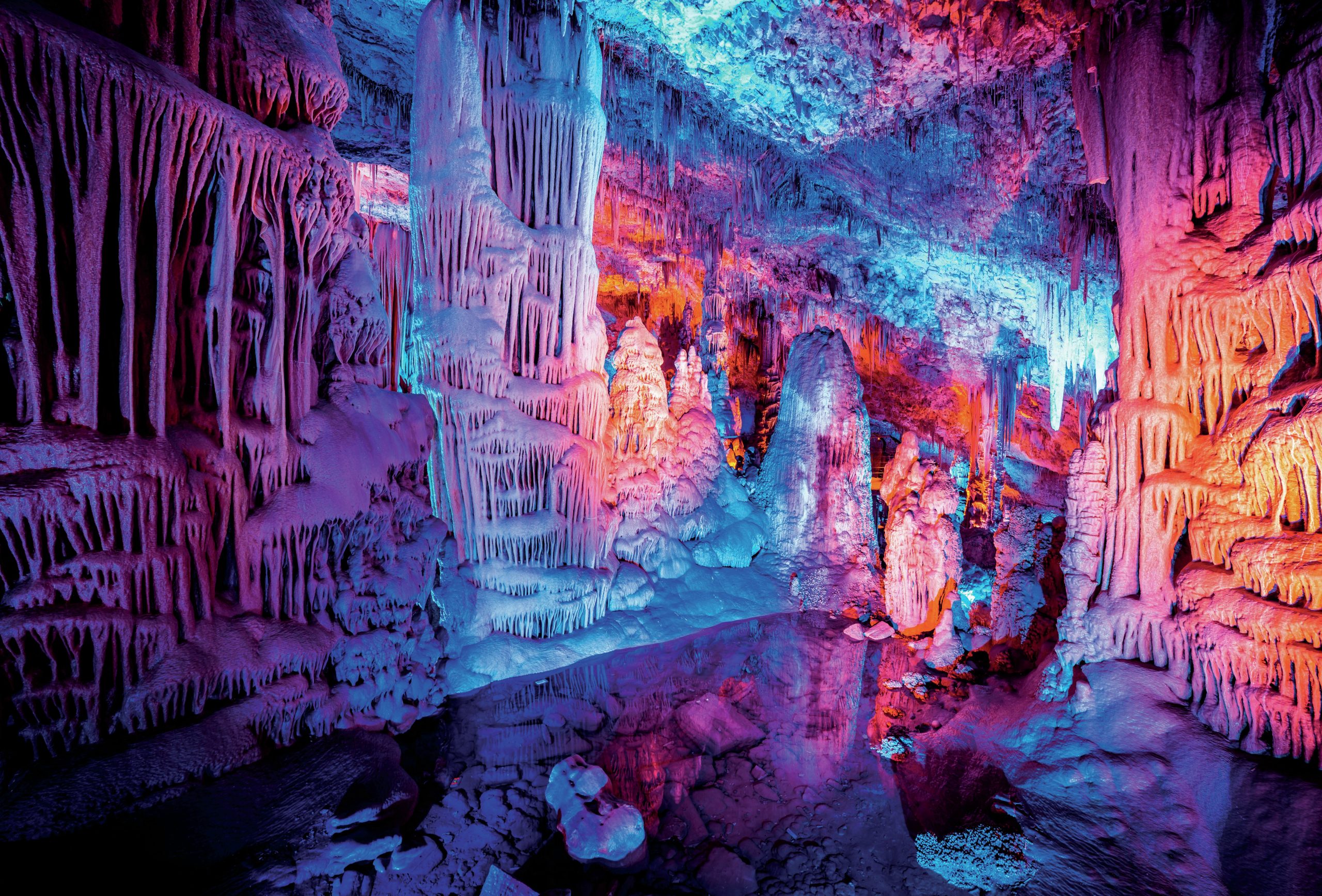
When delving below the Earth’s surface, caves resemble something far more alien than our world up above. In the darkness, rocks seem to twist, bubble and flow, creating unique formations named speleothems. But despite their strange appearance, chemistry can explain their formation.
Decaying organic matter in the soil above the caves releases carbon dioxide into the soil. When rainwater percolates through the soil above the caves, this carbon dioxide dissolves into the water, producing an acidic solution. This acid dissolves the limestone it flows past, carrying the calcium carbonate in the form of calcium hydrogen carbonate (calcium bicarbonate) towards the cave:
Your organisation does not have access to this article.
Sign up today to give your students the edge they need to achieve their best grades with subject expertise
Subscribe




